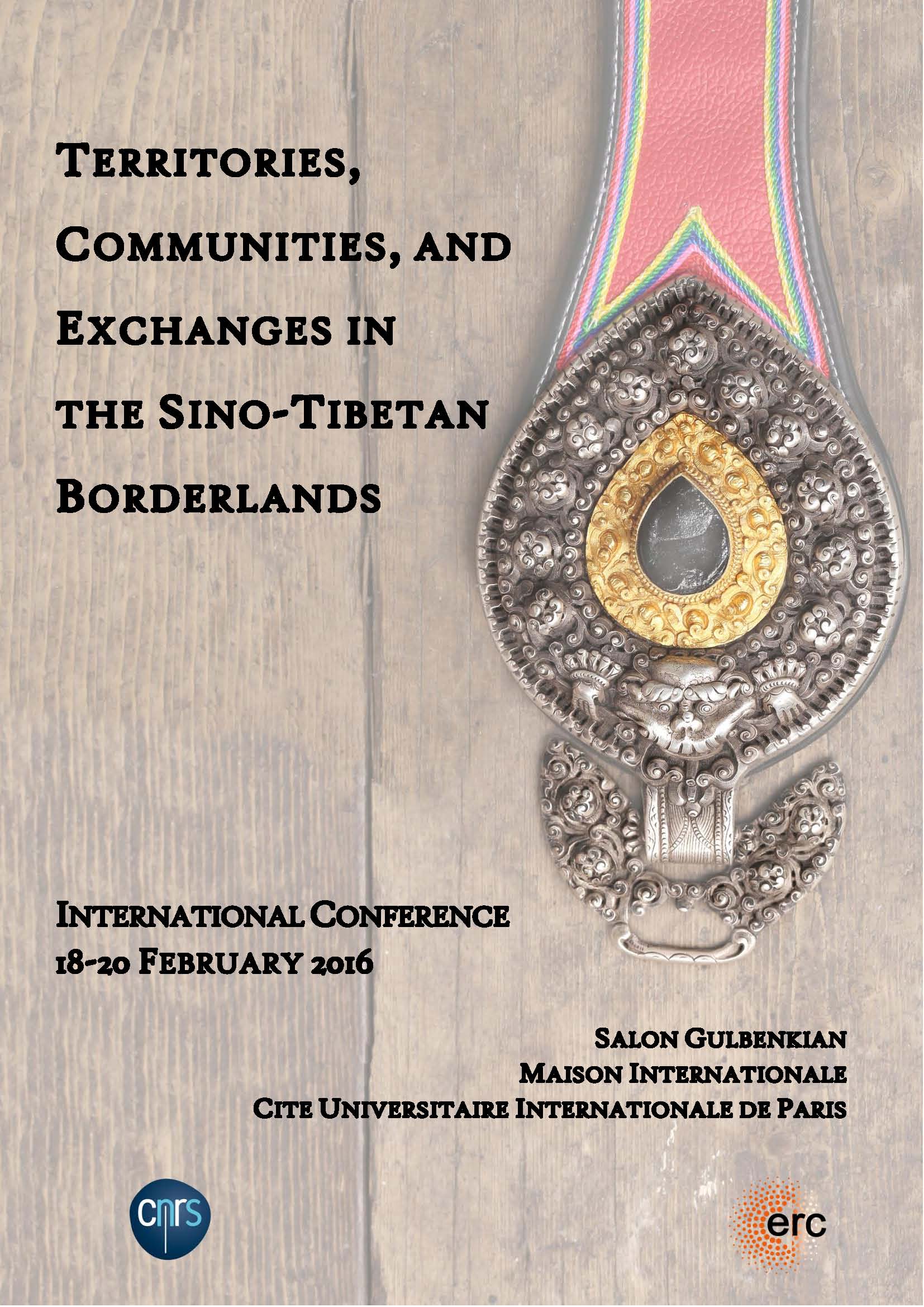Notice
Eric Mortensen (Guilford College)," Boundaries of the Borderlands : Mapping Gyalthang"
- document 1 document 2 document 3
- niveau 1 niveau 2 niveau 3
Descriptif
This project seeks to discern the physical and conceptual boundaries of the Tibetan region of Gyalthang, in southern Kham. At issue are questions about the relationships between older conceptualizations of place and newer understandings of identity vis place in twenty first century Sino-Tibetan borderlands. How do the various peoples who live within its boundaries understand Gyalthang? Following the theoretical work of Jonathan Z. Smith (Map Is Not Territory, 1978), I argue that the complex and dynamic webs of ethnic identity in the region neither conform to fixed physical or conceptual boundaries, nor elevate Gyalthang or even Kham as a central aspect of homeland for many of its inhabitants. My work is based on an evaluation of historical sources coupled with ethnographic and folkloric data gathered during fieldwork conducted over the past twenty-five years in Gyalthang.
Do Gyalthangpa (Tibetans of rGyal Thang) understand themselves to be Khampas? Today, Gyalthang is part of Northwest Yunnan Province of the P. R. China, roughly corresponding to Shangri-La County (Ch. xianggelila xian 香格里拉县), and more expansively the Diqing Tibetan Autonomous Prefecture (Ch. diqing zangzu zizhizhou 迪庆藏族自治州). Gyalthangpa speak several local Tibetic languages (Bartee, 2007), and there are pockets within this territory where Tibetan inhabitants identify neither as Gyalthangpa nor Khampa. While Ganden Sumtseling Monastery was, since the late seventeenth century (Schwieger, 2011; Bstanpa rGyalmtshan, 1985, Hillman 2005), an important center of identity-gravity in the region, some of the geographical areas controlled by the eight kangtsens (monastic colleges) fall outside of Gyalthang. Gyalthang cannot be cleanly defined by the constellations of monastic power. With no specific historical political or religious demarcation of the boundaries of Gyalthang, and with no unified linguistic or ethnic identity, what then makes (or made) Gyalthang Gyalthang?
International conference “Territories, Communities, and Exchanges in the Sino-Tibetan Kham Borderlands,” Februray 18-20, 2016. This conference is an outcome of a collaborative ERC-funded research project (Starting grant no. 283870).
For more information, please visit the project's Website: http://kham.cnrs.fr
Dans la même collection
-
John Bray, "French Catholic Missions and Sino-Tibetan Trade: Local Networks and International Enter…
The Missions Étrangères de Paris (MEP) sent their first missionary on an exploratory mission to the Sino-Tibetan borderlands in 1847, and they retained a presence in the region until 1952. Together
-
C. Pat Giersch (Wellesley College), "Patterns of Inclusion and Exclusion Along Twentieth-Century Ch…
In recent years, increasingly sophisticated work has traced the remarkable changes in early twentieth-century state-building along China's southwestern and Tibetan borderlands. During this same period
-
Lucia Galli (University of Oxford), "The Price of Enlightenment: The Travel Account of Kha stag ʼDz…
Frontier territories characterised by intense socio-economic, political, and cultural inter-actions, in the mid-nineteenth century the easternmost fringes of the Tibetan plateau saw the rise of the
-
Chen Bo (Sichuan University), “House Society” Revisited "
In this paper, I will begin by considering the concept of “house society” and its applicability to Southwest China. I ask the question of why no scholar, Levi-Strauss included since he originally
-
Dáša Mortensen (University of North Carolina at Chapel Hill), " Wangchuk Tempa and the Control of G…
This paper examines the fascinating life of Wangchuk Tempa 汪学鼎 (1886-1961), the de facto early-twentieth-century political and military leader of Gyalthang (rGyal Thang) in southern Kham, in order to
-
Fabienne Jagou, " Manchu Officials’ Khams Travel Accounts: Mapping a Course Through a Qing Territor…
Throughout the Qing dynasty (1644-1911), more and more travelers –officials, military and merchants- went to the Southwest border of China and dedicated some of their time to writing travel accounts,
-
Isabelle Henrion Dourcy (University of Laval), "Making Movies in the Gesar Heartland: The Burgeonin…
This conference is an outcome of the collaborative ERC-funded research project “Territories, Communities, and Exchanges in the Sino-Tibetan Kham Borderlands” This research project focuses on the
-
Stéphane Gros (Centre National de la Recherche Scientifique), "Matrifocality and the House in Drapa…
GrosStéphaneThe practice of a non-contractual, nonobligatory, and nonexclusive visiting sexual system among a matrilineal group in Southwest China has generated as much interest in anthropology as in the mass
-
Tenzin Jinba (National University of Singapore), " Two Gyalrong Weddings Under Fire: Rethinking of …
Two weddings in 2009 and 2015 respectively have received wide publicity among Tibetans and others within and out of China. The first was that of Lobsang Dundrup, a renowned singer from Gyalrong, and
-
Katia Buffetrille (Ecole Pratique des Hautes Etudes), " The Increasing Visibility of the Borderland…
For centuries, Central Tibet and its capital Lhasa were regarded as the center—as is obviously expressed in the very name of the region in Tibetan, dBus, “Center”—of political and religious life in
-
Scott Relyea (Hamline University), " Settling Authority: Sichuanese Farmers in Early Twentieth Cent…
From 1907 to 1911, some 4,000 commoners from the Sichuan Basin ventured west. Enticed by promises of large tracts of uncultivated land and three years of free rent, seeds, animals, and farm implements
-
Dawa Drolma (Bay Path University), " The Renaissance of Traditional Dzongsar Craft-making in the Me…
As a member of a deeply-rooted traditional craft-making family in the Meshö (Sman Shod) Valley of Kham region, I will present the results of my ongoing fieldwork and academic study on the renaissance













